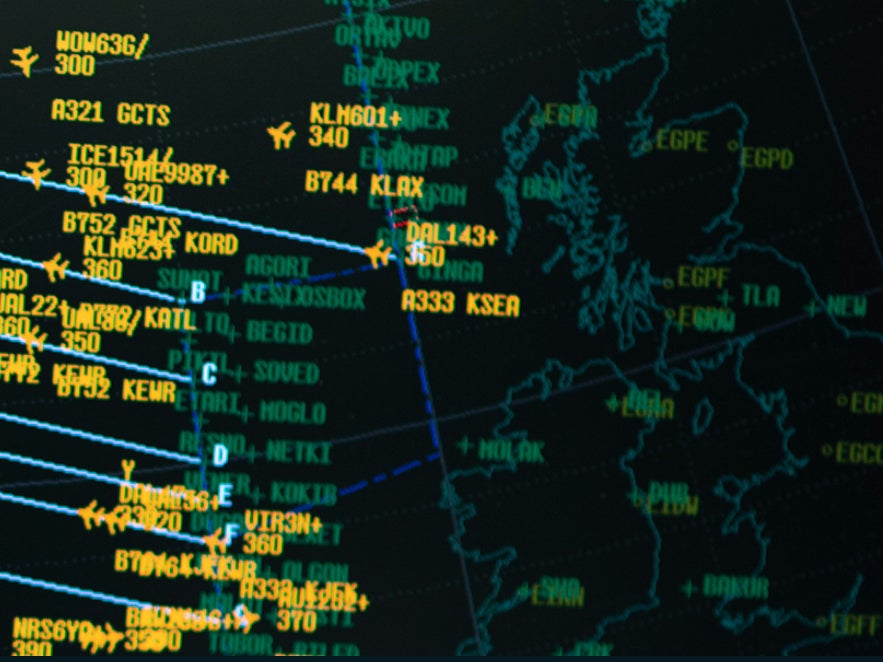Transatlantic pilots get freedom of the skies
The man who pays his way: explore the post-pandemic skyscape with Simon Calder

Your support helps us to tell the story
From reproductive rights to climate change to Big Tech, The Independent is on the ground when the story is developing. Whether it's investigating the financials of Elon Musk's pro-Trump PAC or producing our latest documentary, 'The A Word', which shines a light on the American women fighting for reproductive rights, we know how important it is to parse out the facts from the messaging.
At such a critical moment in US history, we need reporters on the ground. Your donation allows us to keep sending journalists to speak to both sides of the story.
The Independent is trusted by Americans across the entire political spectrum. And unlike many other quality news outlets, we choose not to lock Americans out of our reporting and analysis with paywalls. We believe quality journalism should be available to everyone, paid for by those who can afford it.
Your support makes all the difference.How will the post-pandemic skies look? For a few years at least, much emptier: economic hardship, new ways of working and fears of the faraway will dull the collective appetite for flying.
During the crisis, the thirstiest jets have all flown off to the Californian sunset or the breaker’s yard. A year ago British Airways was the biggest operator of Boeing 747s, with dozens of 20th century Jumbo jets; today it has none. BA’s fleet now has the freshness of youth.
Many of those gas guzzlers were deployed on the route from London Heathrow to New York JFK, which a year ago was the busiest and most lucrative intercontinental air route in the world.
That is why Reading University’s department of meteorology decided to track every flight on the route between December 2019 and February 2020. Researchers led by Professor Paul Williams compared the flightpath of each of those transatlantic trips with the track that exploited the jetstream – the high-altitude currents of air that swirl from west to east. The team calculated that surfing the jetstream to the maximum effect could cut fuel burn and emissions by up to 16 per cent.
Passengers and airline accountants benefit, too: the average New York-London flight would touch down 21 minutes earlier, with a commensurate saving in fuel.
So what’s stopping them? Air traffic control (ATC), that’s what. For decades, Nats, the UK’s air-traffic provider, and its partner Nav Canada have dispatched transatlantic aircraft according to an “organised track structure”. Think of it as a high-altitude highway system where everyone is ordered to keep to their allotted lane and maintain the assigned speed.
Controllers give captains the green light at five-minute intervals, in order to maintain 47 miles of separation at typical cruising speeds. (Center Parcs deploys a similar system for its waterslides; well, perhaps not that similar.)
The precise routes available change from day to day depending on weather. Airlines can bid for the most economic flightpath, but all are sub-optimal.
Until now. Barely had I finished the article about the Reading revelations than Nats said it hopes to tear up the restrictions and allow a flying free-for-all.
To be fair to Jacob Young, manager of operational performance for Nats, his actual words were: “The dramatic fall in traffic we’ve seen across the Atlantic has given us a window of opportunity to do things differently, and to introduce things more quickly than otherwise might have been possible.
“We’re going to disband the organised track structure on days where our ATC supervisors don’t believe they are necessary.
“Airlines will be asked to flight plan based entirely on their optimum route, speed and trajectory.” The trial starts in March.
If you hope to fly the Atlantic this summer, don’t fret: thanks to satellite technology known as ADS-B (“Automatic Dependent Surveillance-Broadcast”), controllers are newly able to track transatlantic planes constantly.
“I thought this was still several years away,” Professor Williams told me. “It sends a powerful message that the aviation sector is committed to reducing its emissions urgently.”
You may loathe aviation. After all, air travel did this: the coronavirus pandemic took hold around the world so quickly because people who were infected with the virus boarded aircraft and spread it thousands of miles away.
You may also regard aircraft as unacceptably damaging to the environment, from the noise and traffic they generate around airports to the carbon emissions they scatter across the skies.
But air travel can also enrich humanity. And this looks like an elegant solution to reduce some of the prodigious damage it causes along the way.



Join our commenting forum
Join thought-provoking conversations, follow other Independent readers and see their replies
Comments